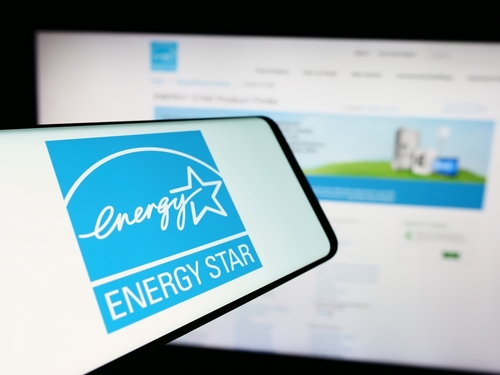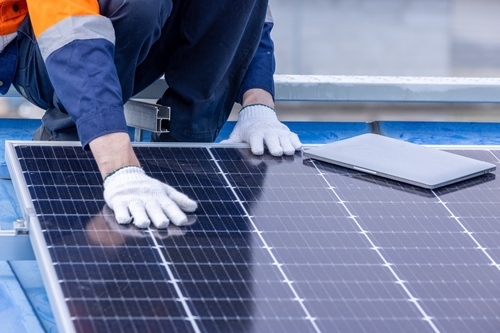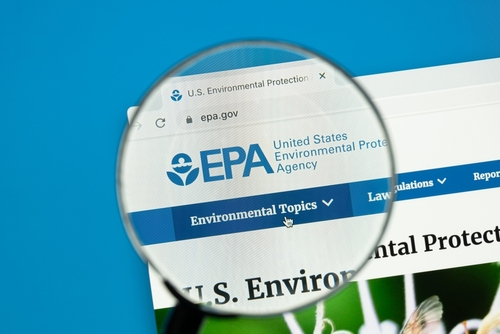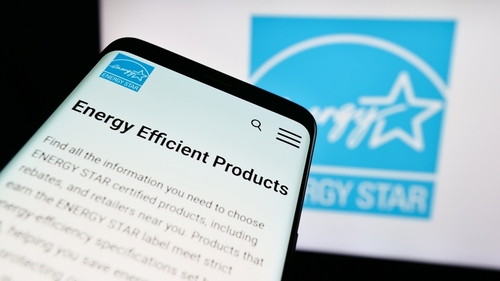The Energy Star label has been a trusted symbol of energy efficiency for over 30 years. Found on appliances, electronics, and even homes, it helped consumers save billions while reducing the country’s carbon footprint. But now, the U.S. Environmental Protection Agency (EPA) plans to shut it down.
This move could quietly reshape how Americans shop, spend, and conserve energy. Without the familiar blue label, buyers may struggle to identify which products are truly energy-efficient—and that confusion could lead to higher bills and fewer incentives.
So what happens when one of the most recognizable climate programs disappears? Here’s what it means for you, your wallet, and the environment.
What Is the Energy Star Program?

The Energy Star program has been a trusted guide for energy-conscious consumers since its launch in 1992. Created by the U.S. Environmental Protection Agency, it was designed to help consumers identify appliances, electronics, and buildings that met high standards for energy efficiency. Over time, the Energy Star label became one of the most recognized symbols of sustainability in the U.S., featured on everything from refrigerators and washing machines to computers and lighting systems. By purchasing Energy Star-certified products, consumers were able to save significantly on their energy bills while also reducing carbon emissions. The program offered manufacturers a voluntary but prestigious badge of eco-friendliness, encouraging innovation in the private sector. It’s estimated that the program has helped Americans save over $500 billion in energy costs while avoiding billions of tons of greenhouse gas emissions.
Why the Program Is Being Terminated

The proposed termination of the Energy Star program is part of a larger restructuring effort within the EPA. Officials have signaled that the program is no longer a priority and is considered non-essential under current budget constraints and political direction. The agency is focusing its limited resources on initiatives that are mandated by law, cutting back on voluntary environmental programs. Behind the scenes, this decision appears to be motivated by a push to scale back government involvement in consumer markets. Detractors argue this move undermines decades of progress toward more sustainable energy use. Supporters of the termination claim that energy-efficient technology has become mainstream and no longer requires government incentives. However, critics say this shift ignores the importance of standardization and the risks of market confusion. As the EPA backs away from this role, consumers and businesses are left wondering what will fill the gap.
Read More: The Power of Sewage: A Sustainable Alternative to Coal?
How This Could Affect You

Without the Energy Star label guiding purchasing decisions, it may become harder for consumers to identify the most energy-efficient products. This could result in people unknowingly buying appliances that use more electricity or water than necessary. The cumulative effect on household expenses could be significant, especially over time. Even small increases in appliance energy use can add up to hundreds of extra dollars annually in utility bills. Families on tight budgets may be hit hardest, as they often rely on trusted programs like Energy Star to guide affordable, long-term decisions. In the absence of a reliable national standard, misinformation or misleading marketing could make these problems worse.
Tax Credits and Rebates Could Disappear

One of the benefits of buying Energy Star-certified products was the potential to receive tax credits or rebates. These incentives were designed to encourage environmentally friendly choices and reduce the cost of upgrading appliances or making home improvements. With the program’s termination, the future of those incentives is now uncertain. Without a government-backed certification, manufacturers might be unable to verify eligibility for certain tax benefits. That means consumers could lose out on hundreds or even thousands of dollars in savings. For those planning renovations or big purchases, this change could affect budgeting and timelines. The financial advantages that made energy-efficient choices more appealing may begin to disappear.
Environmental Progress Could Stall

The environmental impact of ending the Energy Star program is harder to quantify, but potentially enormous. For years, the program has helped reduce demand on power grids, especially during peak usage times, by promoting low-energy appliances. Its removal could reverse progress on lowering carbon emissions and combating climate change. As consumer behavior shifts without this trusted signal, manufacturers might prioritize profit over sustainability. The result could be a wave of new products that meet only the bare minimum standards for energy use. Without regulatory or voluntary programs in place, it becomes harder to maintain momentum in the transition to cleaner energy. Future generations may inherit the environmental consequences of today’s policy decisions.
How Businesses Are Responding

The private sector has reacted strongly to the news. Many manufacturers, retailers, and construction firms relied on Energy Star certifications to validate their products and services. Losing the label creates both logistical and branding challenges. Some companies are already exploring the possibility of creating independent energy-efficiency standards, but there’s concern these efforts could fragment the market. Without a unified standard, it’s likely that customers will become confused about what qualifies as truly energy-efficient. Several major corporations have publicly opposed the EPA’s decision, emphasizing that the program boosted consumer trust and drove innovation. For smaller businesses, especially those in the green building or eco-appliance markets, the loss of Energy Star could mean fewer sales and diminished credibility.
Political and Public Backlash

The decision to terminate the Energy Star program has sparked bipartisan criticism. Lawmakers from both parties have expressed concern that the program’s removal will hurt American families and small businesses. Environmental groups argue that the move sends a troubling message about the nation’s commitment to climate action. At the same time, many voters are unaware of the change or do not understand its implications. As word spreads, it’s likely that pressure will build for Congress or state governments to step in with alternatives. Several states have already announced plans to maintain their own energy efficiency standards, independent of the federal program. Whether those efforts can scale nationally remains to be seen.
What Happens Next?

As of now, the EPA has not outlined a clear transition plan for phasing out Energy Star. It’s unclear whether a replacement initiative will be introduced or if the private sector will be left to create its own solutions. Consumers are advised to be more vigilant when shopping for appliances or building materials, as familiar labels may no longer be available. In the interim, nonprofits and watchdog groups may fill the information gap by offering third-party ratings. But these systems may lack the reach and influence of a government-backed certification. Long-term, the program’s termination raises broader questions about how the U.S. plans to promote sustainable living without public guidance.
Final Thought

The end of the Energy Star program marks a significant shift in how the U.S. government approaches energy efficiency. For over three decades, the label helped consumers save money and protect the environment with confidence. Without it, buyers will need to rely on their own research, third-party reviews, or unverified marketing claims. The ripple effects could stretch across the appliance industry, construction sector, and even household budgets. Whether another entity will step up to fill this gap remains uncertain. In the meantime, consumers and businesses alike must prepare for a more fragmented and potentially confusing energy market.
Read More: 11 Things You Should Never Plug Into a Power Strip

